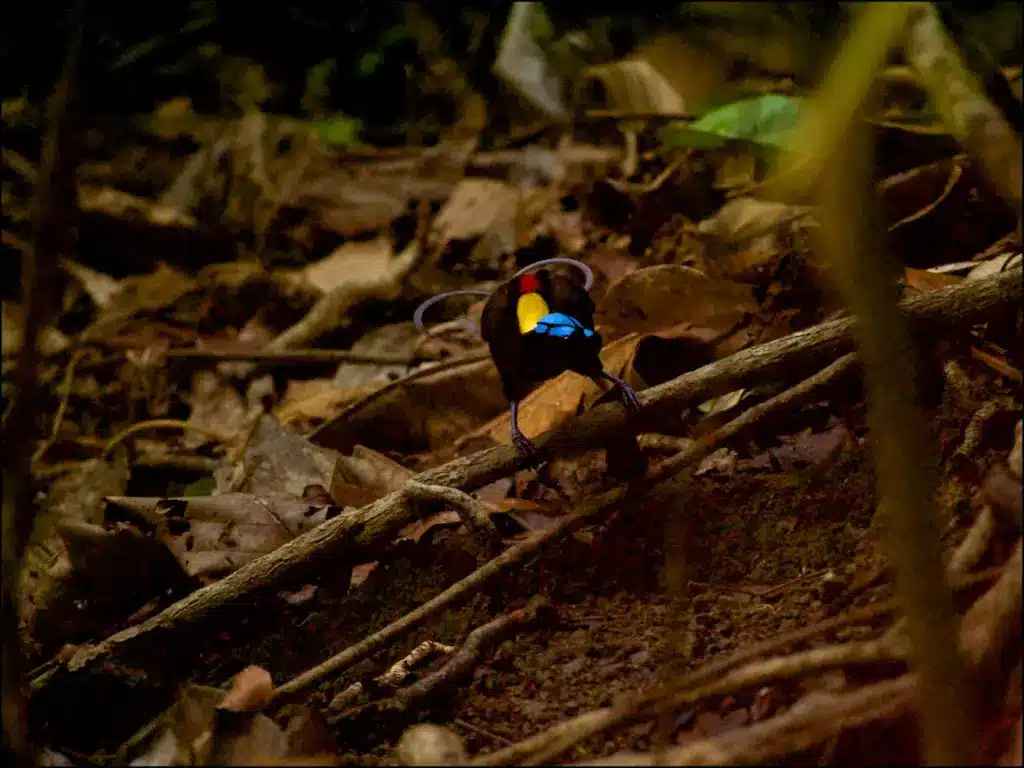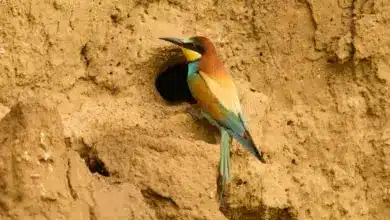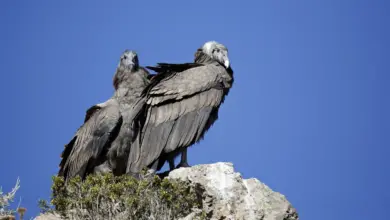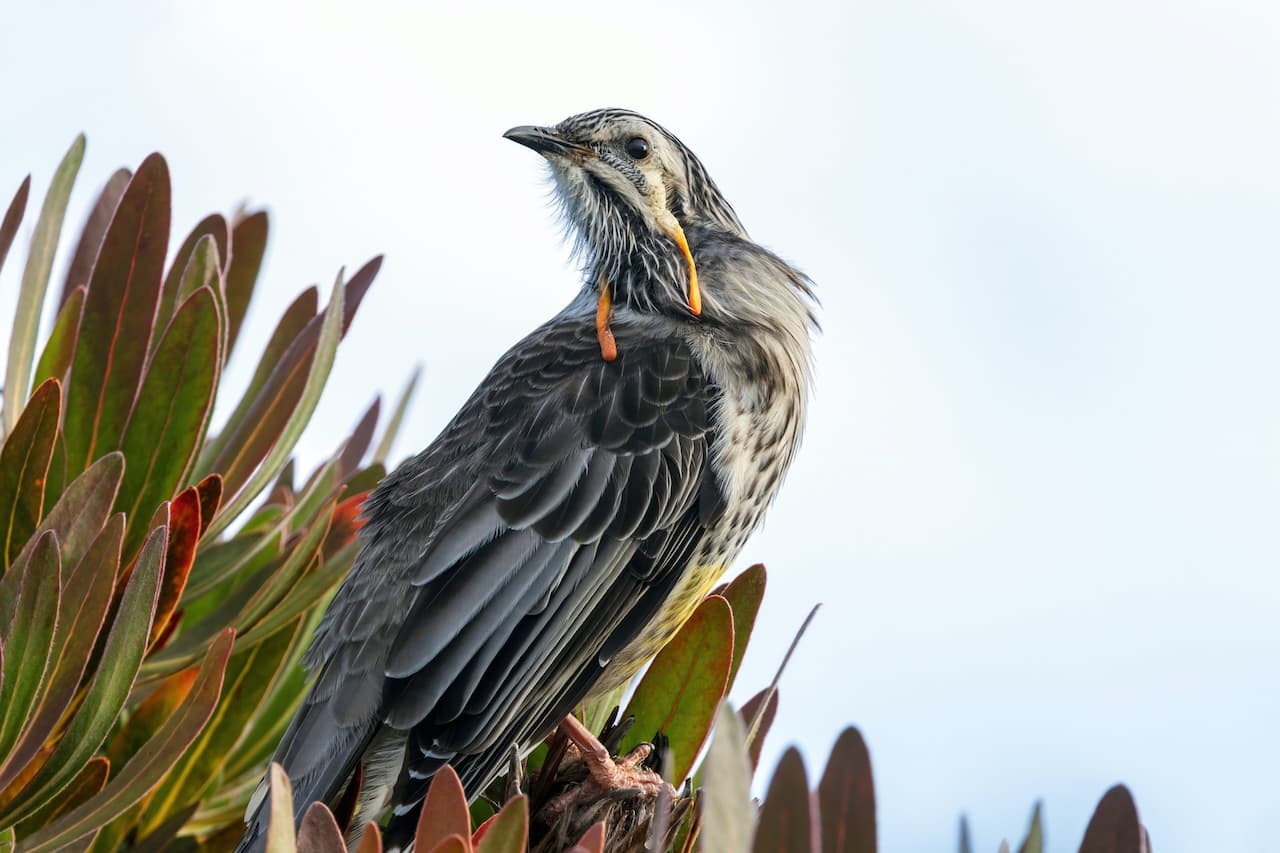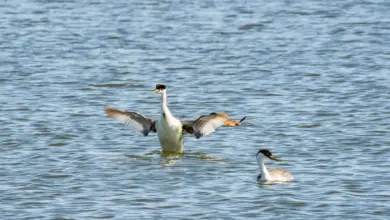Wilson’s Bird of Paradise
Wilson’s Bird of Paradise (Cicinnurus respublica)
The Wilson’s Bird of Paradise, Cicinnurus respublica, received its controversial scientific name of this species by Charles Lucien Bonaparte, Napoleon’s nephew and a republican idealist, who described the bird from a badly damaged trade specimen purchased by British ornithologist Edward Wilson.
In doing so, he beat John Cassin, who wanted to name the bird in honor of Wilson, by several months.
Thirteen years later, in 1863, the German zoologist Heinrich Agathon Bernstein discovered the home grounds of Wilson’s Bird of Paradise on Waigeo Island.
Due to ongoing habitat loss, limited range, and exploitation, the Wilson’s Bird of Paradise is evaluated as Near Threatened on the IUCN Red List of Threatened Species. It is listed in Appendix II of CITES.
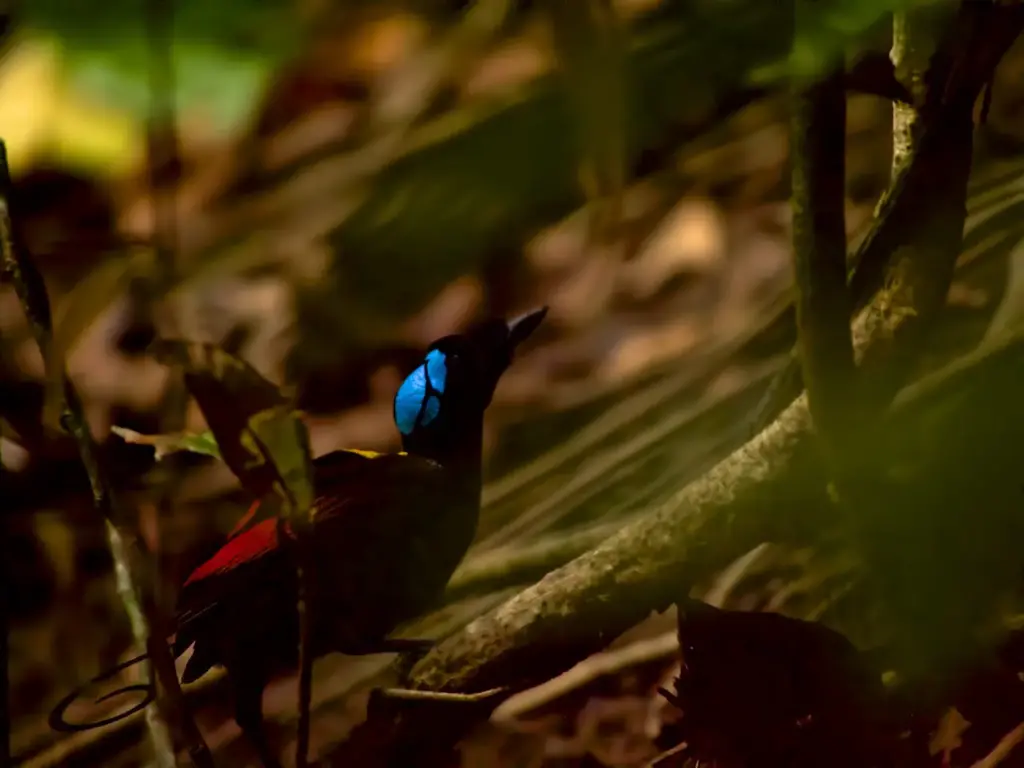
Description
This is a small, up to 21cm long, passerine bird of the Paradisaeidae family. The male is a red and black bird of paradise with a yellow mantle on its neck, a light green mouth, rich blue feet, and two curved violet tail feathers. The head is naked blue with black double cross pattern on it. The female is a brownish bird with a bare blue crown.
In the field the blue bare skin on the crown of the bird’s head is so vivid that it is visible by night, the deep scarlet back and velvet green breast are lush, and the curlicue tail gleams bright silver.
Distribution / Range
An Indonesian endemic, the Wilson’s Bird of Paradise is distributed to the hill and lowland rainforests of Waigeo and Batanta Islands off West Papua.
Diet / Feeding
The diet consists mainly of fruits and small insects.
Bird of Paradise Photo Gallery
